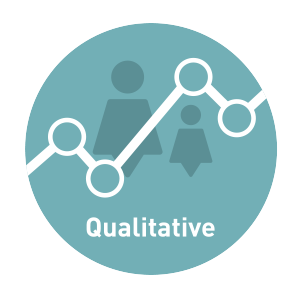
QUANTITATIVE DATA USES
Quantitative data can be useful for tracking changes in empowerment or different elements of empowerment over a period of time, and for monitoring and formal evaluation. For example quantitative methods are particularly useful to analyze variables in large samples, that have been identified through qualitative research.
Quantitative research is also effective at overcoming researcher bias and avoids over-generalizing findings, which can occur through qualitative methods. However, they do not easily answer questions such as ‘why has agency increased/decreased?’ or ‘how have gender norms changed or improved?’. This is why it is important to use a mixed-methods approach for a holistic measurement of empowerment.
There are many additional quantitative data collection methods that are not included in the table below including cohort studies, and case control studies.
QUANTITATIVE DATA COLLECTION METHODS
| Method | When to use it | Key considerations when using this method to measure empowerment |
|---|---|---|
| HOUSEHOLD SURVEYS | Surveys are a commonly used method of measurement because they can be used to collect large amounts of quantitative, representative data which can show change over time. Surveys are useful for collecting data on knowledge, attitudes or behaviors. Time use tools can be inserted into household surveys to gather data on time use. |
|
| PARTICIPATORY MONITORING | Participatory monitoring is an effective method of empowerment measurement because it captures and grounds measurement directly through women and girls understanding of empowerment. |
|
| COMMUNITY SCORECARD | A community scorecard is useful to measure the relations element of the empowerment model. In particular, they can be used to evaluate the impact of service delivery on empowerment from both the user perspective and the service provider. Community scorecards are also useful for gathering data at both the project and community level. |
|
| SOCIAL NETWORK ANALYSIS | Social network analysis (SNA) is a body of methods developed for analyzing relationships and social capital within a network. It can capture the relations and social capital dimensions of the empowerment model, as well as how these influence the flow of resources, leadership and the reinforcement of norms. SNA is mainly used at the community level, and can also facilitate cross-country comparisons. For this reason, SNA is most useful for impact evaluations to assess changes in social networks. |
|

